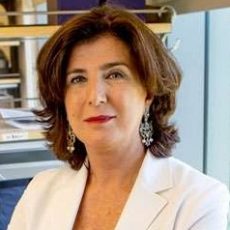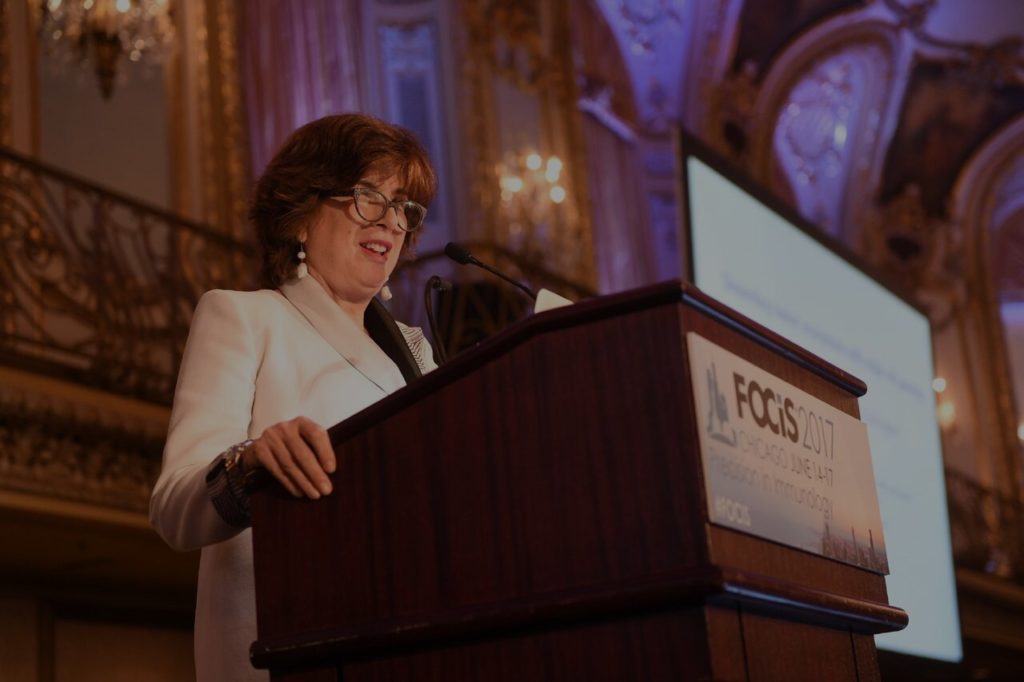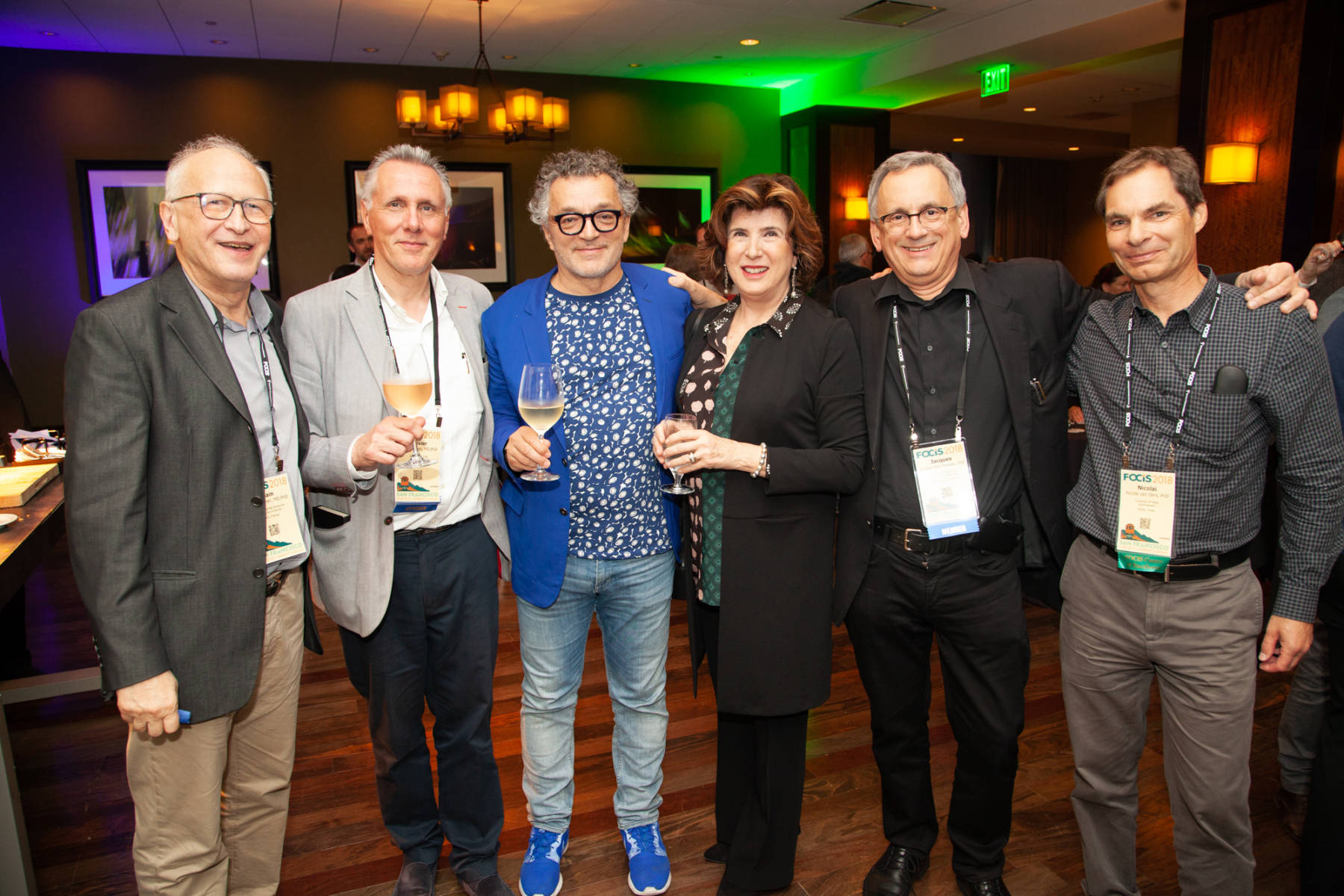FOCIS President (2018-2020), Professor, Stanford University, CA, United States
About Maria Grazia Roncarolo, MD

Introduction
To introduce our membership to Dr. Roncarolo, we interviewed her about her career path, proudest achievements and why she chose to lead FOCIS.
Career path
1. What attracted you to the field of immunology?
I was attracted to the field of immunology very early on during medical school. I had the opportunity to do an internship in the Department of Pediatrics for pediatric immunology. It was fascinating to investigate patients with primary immunodeficiencies and with secondary immunodeficiencies. At that time, the HIV infection was first emerging. By studying these patients, it was fascinating to see how you could understand the immune system and the role of different cells in the immune system responsible for protecting our body against pathogens and non-harmful antigens. Immunology was a very early interest of mine, and I fell in love with it. I still went on to do my residency in pediatrics, but I knew from the beginning that immunology was my passion.
2. After you received your medical degree at the University of Turin, Italy, how did you decide to move to Lyon, France?
During medical school, I was working in the lab investigating the immune system of patients with genetic immune diseases. I soon realized that there were very few options for treatment; stem cell transplantation was still an exploratory field and possible only for a minority of the patients who had an HLA compatible donor. As a young doctor, I found this completely frustrating. One of the reasons why I went to Lyon was because of a very interesting program offering fetal stem cell transplantation, which is transplantation of blood stem cells originating from fetal liver for patients that didn’t have an HLA compatible donor for the transplant. These severe combined immunodeficiency patients, at the time, were called “bubble boys” because we kept them in isolation in a sterile bubble for months, sometimes years until the transplant reconstituted their immune system.
In the course of my residency at the University of Turin, I received a grant to spend 15 months at Lyon. I started working on transplants in the bubble boy patients and studying their immune systems. Throughout that time, I became interested in tolerance. It was clear that in patients where the transplant worked, there was tolerance between the host and the donor despite the fact that the fetal stem cells we transplanted were completely incompatible. After I finished my residency in Pediatrics, I started my fellowship in immunology in Milan but at the same time, I was recruited to Lyon as an assistant professor, which jump-started my career. In the transplantation Center in Lyon I continued to work on fetal stem cell transplantation and to dissect the mechanisms of immunological tolerance. At that time in 1986, we performed for the first time in the world an in-utero fetal stem cell transplant to cure a bubble boy before birth. With my mentor at the time, Jean-Louis Touraine we published the data describing the successful outcome of in utero fetal stem cell transplant. I also started to publish papers showing that immune tolerance in patients that received fetal stem cells was an active mechanism of suppression mediated by antigen specific T cells. It was a very productive period of my career from 1986 to 1989.
3. You then moved to the DNAX Research Institute for Molecular and Cellular Biology in Palo Alto, California. What motivated you to make this move?
After the first in utero stem cell transplant, I thought this therapeutic modality would work for any genetic disease of the blood and immune system and also for inherited metabolic diseases. This prediction was based on the assumption that the fetal stem cells would not be rejected by the patient, and they would mediate immunological tolerance in the patient. This assumption was wrong, and it turned out that the in-utero stem cell transplant was successful only in patients that were immune deficient. In the bubble boys, the in-utero transplant worked, but when we transplanted fetal patients with other genetic diseases we didn’t succeed. This clearly indicated that the fetus had a perfectly competent immune system to reject the transplant. Thus, the immunological dogma that the fetus was tolerant, and the fetal stem cells that we transplanted would induce tolerance was wrong. That was a critical point in my career, because when you discover that a hypothesis in the textbook is wrong, it’s quite challenging as a young investigator.
At the same time, I had the opportunity to work at DNAX. In the late ’80s and early 90’s, DNAX was a top research institute in immunology and molecular biology. When I was working in Lyon, I met the founders of DNAX: three very famous Stanford professors—two of which were Nobel laureates. One of the founders was Paul Berg, who I am still in contact with today. Paul was really interested in my work on fetal stem cells. He suggested I move to DNAX where there was an ideal environment to investigate the mechanism of tolerance more in-depth and investigate the role of cytokines in the function of the immune system and in induction and maintenance of immunological tolerance. At that time, DNAX was at the frontier of cloning new cytokines and new cytokine receptors; it was the ideal place to advance my research. However, it was a difficult choice to leave Lyon, because I already had a position as Assistant Professor at a relatively young stage in my career, and I was practicing medicine in the hospital. My move to DNAX meant to go back to the bench full time which was not an obvious choice, but it turned out to be the best choice of my career.
Having the opportunity to dedicate all my time to wet lab research in such a fantastic, intellectually stimulating environment, allowed me to advance my research and to establish myself as an immunologist. In those seven years at DNAX, we cloned and characterized human interleukin-10, we discovered a new population of regulatory T cells (the regulatory type 1 T cells), which play a key role in the induction of tolerance, and we could test these Tr1 cells in several different humanized mouse models in collaboration with Irv Weissman. They were very productive and exciting years in my scientific career.
4. In 1998, you moved to Milan, Italy to become the director of the Telethon Institute for Cell and Gene Therapy at the San Raffaele Scientific Institute and then became the Scientific Director of San Raffaele Scientific Institute. What are some of your proudest moments working there?
Again, that was another difficult choice for me to go back to Italy. After seven years in DNAX, I found that it was time for me to take the next step. I had an opportunity to work at Stanford as a faculty member. At the same time, the president of the Italy-based Telethon Foundation asked me to build the Telethon Institute for Gene Therapy (TIGET), which was recently created. I felt that it was time for me to go back to my country to contribute to the Italian science and develop new gene therapies for patients with genetic diseases. From a pure immunologist working on immunological tolerance on stem cell transplantation, I became a gene therapist, has it was clear that for some of the immunological diseases, gene therapy was the correct approach. I started to build the Institute and established a pediatric translational and clinical unit in cell and gene therapy. Under my leadership, TIGET became a world recognized institute with several breakthrough gene therapy trials. We developed the first successful stem cell gene therapy for ADA-SCID a type of primary immunodeficiency, which is a drug on the marker with the name of Stirmvelis.
5. You are now a Professor of Pediatrics and Medicine at the Stanford School of Medicine. Please tell us about the research you’re most proud of.
I think the biggest goal for me at Stanford is to implement a translational research program in cell and gene therapy which leverage the many discoveries of the Stem Cell Institute. I’m very proud of the team I have assembled in the last four years at Stanford. I am also very proud that in addition to the infrastructure and the team, we now have several phase 1 clinical trials, which are really the product of our bench work. Stanford has a wonderful reputation for cutting-edge research, but to conduct translational research with clinical trials that are from the bench to the bedside gives a new dimension to the science.
6. Do you miss anything from the earlier part of your career?
When I was the director of the Gene Therapy Institute TIGET, I had the opportunity to focus on the science in immunology and gene therapy and build a translational research program. Later when I became the scientific director of the San Raffaele Scientific Institute, I had to broader my scientific interests and change focus. It was more of a managerial job, and I spent close to six years being a manager of science and building translational medicine in different disease areas, including cancer and neuroscience. What I miss from the early part of my career is being able to entirely focus on science and translational medicine, instead of being more involved in building infrastructure and having administrative and managerial roles.
On the other hand, I strongly believe when you reach a certain stage of your career, your primary responsibilities are to build something that is there to stay, to build your legacy and to mentor the new generation of physician scientists. This has been a big drive for me, both as director of the TIGET Institute and even more as the scientific director of the San Raffaele Scientific Institute (which is the largest research institute in Italy). To build a vision and a team that can flourish and succeed even after I move on is also my primary goal at Stanford. I really hope that I will be able to establish a successful cell and gene therapy program in the space of immunology and pediatric diseases and contribute to Stanford reputation in translational medicine .
7. Looking back on your career, is there anything you would have done differently?
The six years as a scientific director at San Raffaele Scientific Institute were in one way very important for me. I learned to run a large institute with more than 1,000 people and to be responsible for big budgets and to really make an impact on Italian science, but it was not ideal for my research and for the translational medicine program that I was leading. That was a very demanding job with many administrative and political obligations. Being the scientific director of the largest research institute in Italy, the position was very visible. I felt the responsibility to make the best decisions for the Institute that could also have a broader impact on the Italian science, and to be a role model for young Italian women who choose a scientific career. It was a prestigious position, but it distracted me from my primary goal.


Work with FOCIS
8. Switching gears, how did you first get involved with FOCIS?
I got involved with FOCIS from the very beginning. I knew Gary Fathman and David Hafler, and I remember discussing FOCIS even before it started. I thought it was a great idea to bring together a community of scientists and physician scientists interested in transitional medicine in the space of immunology.
9. How has FOCIS changed your world?
I always say that translational medicine is a separate discipline from basic research and clinical research. No matter if you’re an MD, MD/PhD or a staff member working the space of translation medicine, you always feel that you’re in between two fields, the bench and the bed. So FOCIS is really the home for people like me that decided from the very early stage in their career that they wanted to be bench scientists, but they also wanted to translate their research into novel therapies to cure patients. There are no other societies that better identify with the translational medicine than FOCIS.
10. What are your goals as the FOCIS President?
I think that the Past President did a wonderful job in bringing FOCIS where it is today. FOCIS is the crossroad of research and clinical care and the crossroad between academia, industry and biotech. My goal as a President is not only to consolidate the previous work of Jeff Bluestone in making FOCIS the home for translational medicine, but also to expand the impact of FOCIS. I think that FOCIS has tremendous potential to have an impact in translational medicine worldwide. Because of our structure as a federation of clinical immunology societies, we can embrace many societies from all over the world.
My goal as a President is to expand the impact of FOCIS to work internationally and to consolidate the liaison that FOCIS created between academia and industry. Especially today, it is clear that academia and industry need to partner to accelerate the translation of research discoveries into novel drugs. Immunology right now is finally recognized as the central player in many diseases, from cancer to inflammatory diseases to autoimmunity and transplantation. We finally have novel drugs that can be tested in patients to change the history of these diseases, and it’s clear that bringing industry and academia together can move the field faster.
11. If your colleague asked you why they should join FOCIS, what would you tell them?
I would tell them that if you look for a place where you can interact with basic scientists and with clinicians, tackling a specific disease or a specific biological problem, and when you also have the opportunity to hear where industry is at that specific disease or addressing that specific biological problem, FOCIS is your home.
12. Do you have any advice to share with someone starting out in the field?
If you have an interest in translational medicine—no matter if you’re an MD or a PhD, look for an environment where you have the right mentorship and the right infrastructure that supports your goal and vision to translate your discovery into novel drugs. It doesn’t matter if you’re in industry or academia or the private or public sector. If you have the right infrastructure, the right critical mass and the right mentorship, that’s the space where you can succeed.
Personal
13. What motivates you to work hard?
My passion! All of us that are in translational medicine, we are used to dealing with frustration, because many things don’t work, and those that work always go slower than what we anticipated. Of course, if you succeed in bringing your research to the bedside, and if you see you can make an impact for patients, it is incredibly rewarding—so, it’s really a passion. I would not be able to define it as anything else.
14. What is your favorite time management tool?
I am a disciplined person, so I am pretty good at compartmentalizing and focusing on priorities. With this in mind, by having a role not only as a scientist, but as a doctor and as a manager with many obligations, you must accept imperfection. For women this is sometimes difficult, because we tend to be very tough on ourselves and expect to always be 100%. You should be well organized and accept that sometimes things aren’t done as perfect as they could be, but you need to move on to the next task.
15. What is a favorite vacation spot?
You may be surprised but my favorite vacation spot is my home in La Jolla, California. When I am at home, I feel like I am just on vacation. It’s a home close to the beach. I love the sea, and I love to be around my family
16. What is your favorite beverage or drink?
I have many drinks that I enjoy, but my family came from the Barolo country. My grandfather was born in a little village next to the village of Barolo, so of course, a good glass of Barolo cannot be matched by anything else.
